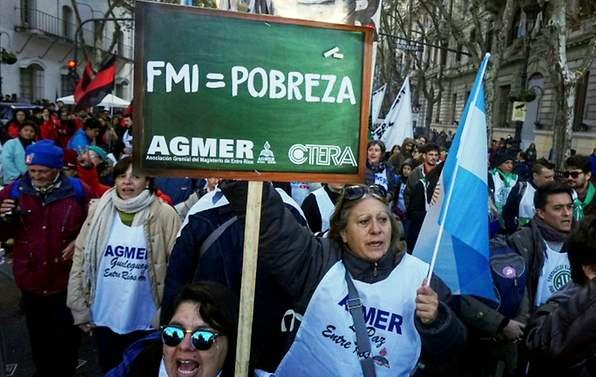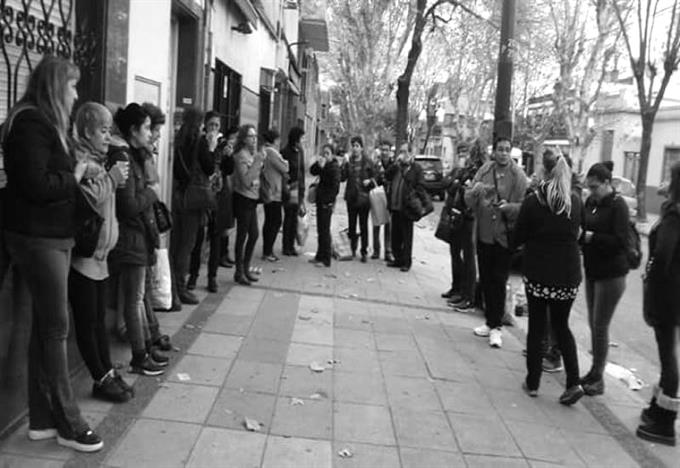RIO DE JANEIRO, BRAZIL – The National Institute of Statistics and Census of Argentina (INDEC) reported that, in one year, poverty increased from 27.3 percent to 35.4 percent, while homelessness rose from 4.9 percent to 7.7 percent, according to comparative data from the first quarters of 2018 and 2019.
When these percentages are projected to the national urban population, the number of impoverished increased from 11,150,000 to 14,400,000: 3,250,000 new impoverished individuals in only 12 months. Including the rural population, the number of people living in poverty has risen to 15,800,000.
Meanwhile, there was also a rise in homelessness from 4.9 percent a year ago to 7.7 percent in the current survey. There are 3.1 million homeless, of whom 1,100,000 are newly homeless.
These indicators are also higher than those in the second semester of 2018, when INDEC reported 6.7 percent homelessness and 32 percent poverty.
According to economist Claudio Lozano, 35.4 percent of the first half of this year is divided into 34.1 percent in the first quarter and 36.7 percent in the second quarter, while homelessness rises from 7.1 percent to 8.3 percent.
“In other words, from March to June it was found that the impoverished population includes 16.5 million people and the homeless 3.7 million. That is, a greater worsening than the six-month average,” says Lozano.

By age, children under the age of 14 are the most affected: 52.6 percent – five million children – live in impoverished homes compared to 41.4 percent a year ago. And child homelessness increased from 8 to 13.1 percent.
By region, Argentina’s Northeast stands out for a total of 42.4 percent poverty with the peak of 46.9 percent in Resistencia (Chaco). But Concordia, in the Pampas region tops the ranking with 52.9 percent.
By population, the Buenos Aires metropolitan area measured 39.8 percent, representing 4,864,475 impoverished individuals. A year ago it was 31.9 percent totaling 3,843,746 people.
Meanwhile, homelessness increased from 745,058 to 1,117,887 people. And in the City of Buenos Aires, there are 429,630 people living in poverty compared to 328,669 a year ago. It increased from 11.2 percent to 14.3 percent.
Thus, more than one-third of the total urban poverty is concentrated in the metropolitan region with 5,294,105 people living in poverty.
This poverty figure is the highest since President Mauricio Macri took office in late 2015, with poverty then at 29 percent, according to alternative indicators (UCA Observatory model), due to the absence of official indicators at the time.
However, it is estimated that President Macri will end his current term with a higher level of poverty due to the economic and social deterioration of the current semester, particularly from August, following the PASO (primary elections). That figure will only be known in March 2020.
This sharp increase in homelessness and poverty is explained by the deterioration of the population’s living conditions as a result of several factors: a drop in real wages, a deterioration in pensions and other social benefits, job losses, a rise in self-employment and informal jobs in the context of a shrinking economic activity, a decline in consumption and investment, and a drop in the population’s purchasing power as a result of rising inflation.
The INDEC is called income poverty indicator because it takes into account the income of individuals and families and contrasts it with the value of the basic food basket and the total basic basket.

This comparison shows that the values of both baskets in those 12 months up to June, increased between 58.3 and 58.9 percent, above inflation compared to increases in salaries and retirements of approximately 35 percent and a decline in the incomes of the informal self-employed and registered taxpayers under the simplified tax regime.
LCG consultancy says that “for the remainder of 2019, the indicators for poverty and homelessness are likely to continue to worsen.
The data for the second semester will incorporate the new inflation acceleration and the resulting decline in household purchasing power. The adjustment for retirement and pension mobility will not overcome the rise in prices and the openings for formal workers still looks very limited”.
Agustin Salvia, director of the UCA Social Observatory, estimated that “by the end of the year there would be a new increase in poverty, about 37 or 38 percent”.

